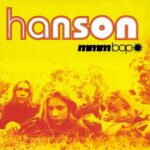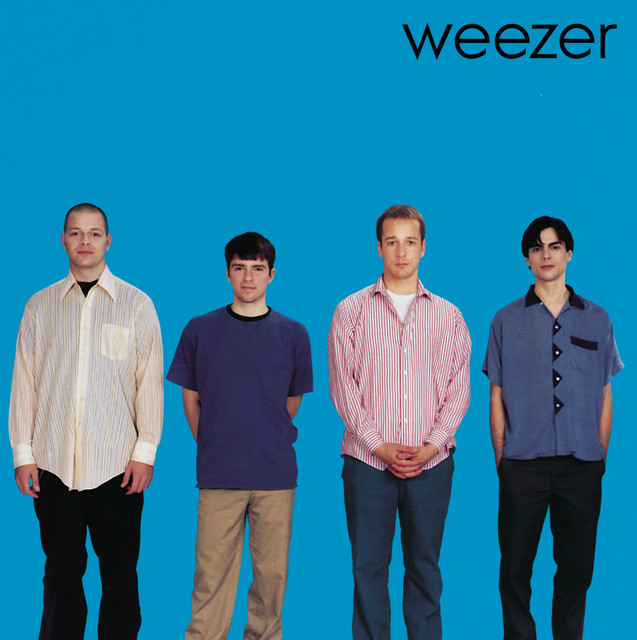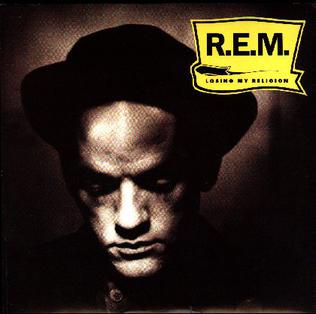 When Hanson dropped “MMMBop” in 1997, the world wasn’t ready for what was coming. The song burst onto radio with an infectious blend of bubblegum pop, Motown-inspired soul, and pure teenage enthusiasm that made it instantly irresistible. Three brothers from Tulsa, Oklahoma — Isaac, Taylor, and Zac Hanson — seemed almost too young to pull off such a polished sound. Yet behind the sunny chorus and hair-flipping charm was a remarkably crafted pop record, one that became a cultural earthquake. It wasn’t just catchy; it was unstoppable. The song rocketed to No. 1 in 27 countries, became an anthem for late-’90s youth culture, and announced Hanson as global sensations. “MMMBop” wasn’t just another one-hit wonder — it was a pop phenomenon that still resonates today, decades after its joyous debut.
When Hanson dropped “MMMBop” in 1997, the world wasn’t ready for what was coming. The song burst onto radio with an infectious blend of bubblegum pop, Motown-inspired soul, and pure teenage enthusiasm that made it instantly irresistible. Three brothers from Tulsa, Oklahoma — Isaac, Taylor, and Zac Hanson — seemed almost too young to pull off such a polished sound. Yet behind the sunny chorus and hair-flipping charm was a remarkably crafted pop record, one that became a cultural earthquake. It wasn’t just catchy; it was unstoppable. The song rocketed to No. 1 in 27 countries, became an anthem for late-’90s youth culture, and announced Hanson as global sensations. “MMMBop” wasn’t just another one-hit wonder — it was a pop phenomenon that still resonates today, decades after its joyous debut.
The Birth of a Pop Juggernaut
Hanson had been performing together for years before “MMMBop” hit the airwaves. The brothers—Isaac (16), Taylor (14), and Zac (11)—were home-schooled kids raised in a musically nurturing household, with parents who introduced them to classic Motown, The Beach Boys, and ’60s rock harmony. Before fame, they spent countless hours singing a cappella versions of vintage hits like “Rockin’ Robin” and “Johnny B. Goode.” That early education in melody and harmony shaped their songwriting instincts in ways that would pay off in spectacular fashion.
“MMMBop” was first conceived as a slower, soulful track on their 1996 independent album Boomerang. It wasn’t until they teamed up with producer Steve Lironi — and later, the production powerhouse duo The Dust Brothers, known for their work with Beck and the Beastie Boys — that the song found its hyperkinetic pop identity. The Dust Brothers layered crisp drums, punchy guitars, and bright harmonies into the mix, giving the track its signature bounce and radio-ready sheen. When Mercury Records released “MMMBop” as the lead single from Hanson’s major-label debut Middle of Nowhere in April 1997, it exploded.
The Sound of Sunshine
What makes “MMMBop” so magnetic is its perfect balance of youthful exuberance and genuine musical craftsmanship. The track opens with a handclap beat and an instantly recognizable “Doo-wah, MMMBop, ba duba dop” hook that feels both spontaneous and tightly constructed. The vocal harmonies are stacked like a Motown girl group, while the rhythm section bounces with a syncopated pop-funk groove that betrays the brothers’ surprisingly mature understanding of groove and arrangement.
Taylor Hanson’s lead vocal — a blend of adolescent innocence and raw conviction — anchors the chaos. He sings with a heart-on-sleeve earnestness that cuts through the candy coating. The song’s key change in the final chorus elevates the track to euphoric levels, a classic pop move executed with surgical precision.
Musically, “MMMBop” captures the spirit of a generation on the edge of the millennium — optimistic, hyperactive, and brimming with energy. It was part of a broader wave of late-’90s pop resurgence that would soon include *NSYNC, the Backstreet Boys, and Britney Spears. But Hanson stood apart. They played their own instruments, wrote their own songs, and carried the DNA of classic pop songwriting in their harmonies.
Lyrical Layers Beneath the Bubblegum
It’s easy to assume “MMMBop” is pure nonsense — after all, the chorus sounds like joyful gibberish. But the lyrics actually carry a surprisingly reflective message about time, loss, and the fragility of relationships.
“You have so many relationships in this life, only one or two will last,” the brothers sing, sounding wise beyond their years. The “MMMBop” itself, according to Taylor Hanson, represents a fleeting moment — that tiny blip of time in which things can change forever. It’s about how friendships fade, opportunities slip away, and how life moves faster than you expect.
The nonsense syllables aren’t meaningless; they’re the sound of time passing, the blur of youth itself. This depth disguised beneath candy-coated melody is part of why “MMMBop” has endured. It’s both youthful and timeless, silly and profound, all at once — a balance only the best pop songs achieve.
The World Goes MMMBop-Crazy
When “MMMBop” hit radio, it was like setting off a glitter bomb in the middle of mainstream culture. The single topped the Billboard Hot 100 in May 1997 and stayed there for three weeks. It was the number one song in countries from the UK to Australia, Sweden to Mexico. The music video — with the brothers rollerblading through suburban sunshine and jamming in front of psychedelic backdrops — became a staple on MTV and VH1.
By the end of 1997, Middle of Nowhere had sold over 10 million copies worldwide. Hanson were suddenly everywhere: magazine covers, talk shows, award shows, and a global tour that drew thousands of screaming fans. The band’s wholesome image — clean-cut, family-friendly, and genuinely talented — offered a refreshing contrast to the angst and darkness that had dominated early-’90s grunge and alternative rock.
Their rise was meteoric, but not without skepticism. Some critics dismissed them as pre-fabricated pop, but that was far from the truth. Hanson wrote and played nearly every note on their debut, a rarity in an era dominated by studio-created teen acts. That authenticity won over many skeptics — and solidified their reputation as musicians first, celebrities second.
The Science of Catchiness
Pop scientists and songwriters alike have long studied “MMMBop” as an example of near-perfect melodic engineering. The chorus, made of nonsensical syllables, functions as a universal language — anyone, anywhere, can sing it. Its rhythm uses syncopation and a melodic jump that feels unexpected yet satisfying, keeping the listener engaged without realizing why.
Musicologist Nate Sloan once described “MMMBop” as “a masterclass in how to make melody a physical experience.” It’s the kind of song that activates the same parts of the brain as laughter or movement — you don’t just hear it; you feel it. That might explain why, even decades later, it remains instantly recognizable after just a few notes.
Hanson’s Fight for Artistic Credibility
After “MMMBop,” Hanson faced the classic pop curse: how to follow up a world-conquering hit. Their next singles — “Where’s the Love,” “I Will Come to You,” and “Weird” — were all successful but inevitably lived in the shadow of that one unstoppable track. The band eventually left their label and founded their own, 3CG Records, determined to prove that they were more than a childhood novelty.
As they matured, Hanson leaned into their roots — blending soul, rock, and folk influences into records like Underneath (2004) and The Walk (2007). They kept writing, producing, and touring independently, building a loyal adult fanbase who grew up with them. While they never reached the commercial peak of “MMMBop” again, they earned something arguably more valuable: long-term respect.
Nostalgia and Legacy
To this day, “MMMBop” remains the ultimate time capsule of late-’90s innocence. It evokes the smell of bubblegum and cassette tapes, the golden glow of summer vacations, and the last years before the internet changed everything. When it plays now — whether at a wedding, a karaoke bar, or a retro dance night — it still sparks an immediate smile.
What’s remarkable is how the song has aged better than expected. Stripped of the hype, “MMMBop” is revealed as a finely crafted pop gem — structurally complex, vocally layered, and emotionally sincere. It’s not nostalgia alone that keeps it alive; it’s the craftsmanship.
In a 2017 interview marking the song’s 20th anniversary, Taylor Hanson reflected, “People thought it was a silly song, but it was about holding on to what matters. When you’re young, you think everything lasts forever. But it doesn’t.” That sentiment explains the song’s emotional staying power — beneath its sugar rush lies the universal ache of growing up.
Cultural Echoes
“MMMBop” didn’t just define a band; it helped define a pop generation. It opened the door for young, family-friendly acts like the Jonas Brothers, who have openly cited Hanson as an influence. It also proved that teen pop could coexist with musicianship and authenticity — a model that artists like Billie Eilish and Olivia Rodrigo have built upon in different ways.
The song has been covered, parodied, and sampled countless times. It appeared in shows like Family Guy, Saturday Night Live, and That ’70s Show. Even now, the brothers perform it live at every concert — often with more grit and groove, showing how the song has grown alongside them.
Why It Still Works
“MMMBop” remains a rare pop miracle — a song that shouldn’t work as well as it does. The syllables make no sense, the energy borders on chaos, and the singers were barely teenagers. Yet, it’s that very purity — the lack of cynicism — that makes it timeless.
The song captures lightning in a bottle: the sound of joy before self-awareness, the innocence before irony. It’s why millennials, Gen Z, and even Gen Alpha can still respond to it instinctively. You don’t analyze “MMMBop”; you feel it.
For Hanson, the song became both a blessing and a challenge. It forever tied them to a single era, but it also guaranteed their immortality in pop history. Plenty of artists chase hits their whole lives; Hanson achieved one that never really went away.
The Beat Goes On
Over 25 years later, Hanson continue to tour, record, and connect with fans — not as nostalgia acts, but as veteran musicians with a vast catalog. Their harmonies remain tight, their live shows dynamic, and their dedication to independence admirable. Yet no matter how much they evolve, “MMMBop” remains their gravitational center, the song that reminds the world of a time when three kids from Tulsa made everyone dance, smile, and sing nonsense syllables at the top of their lungs.
The song’s legacy isn’t about commercial dominance — it’s about endurance. In a pop landscape littered with disposable hits, “MMMBop” has proven itself indestructible. It’s the rare track that can unite generations in three syllables of pure sunshine.
So yes, it’s catchy. But it’s also something more: it’s the sound of eternal youth — that fleeting “MMMBop” of life where everything is golden and nothing hurts yet.


